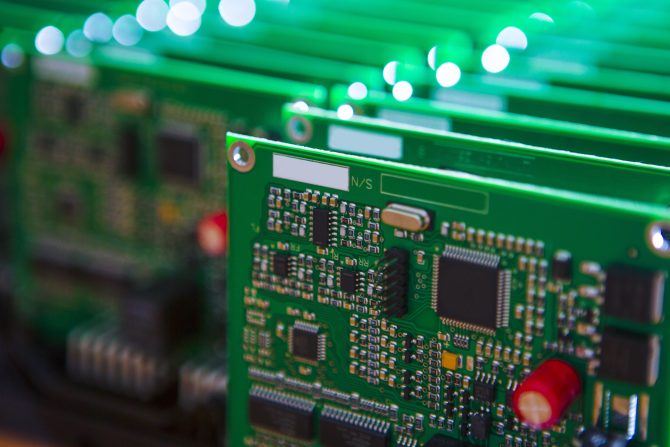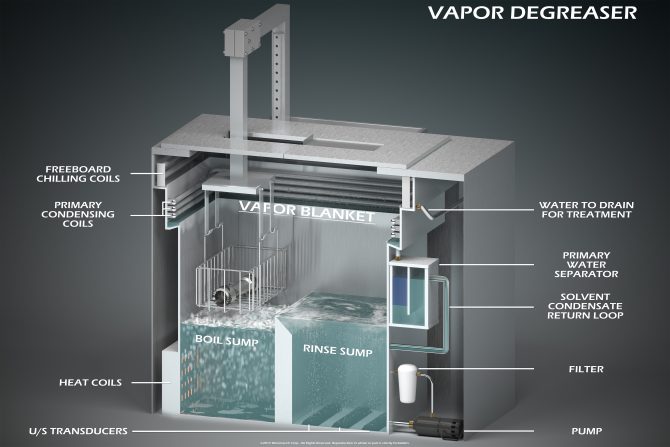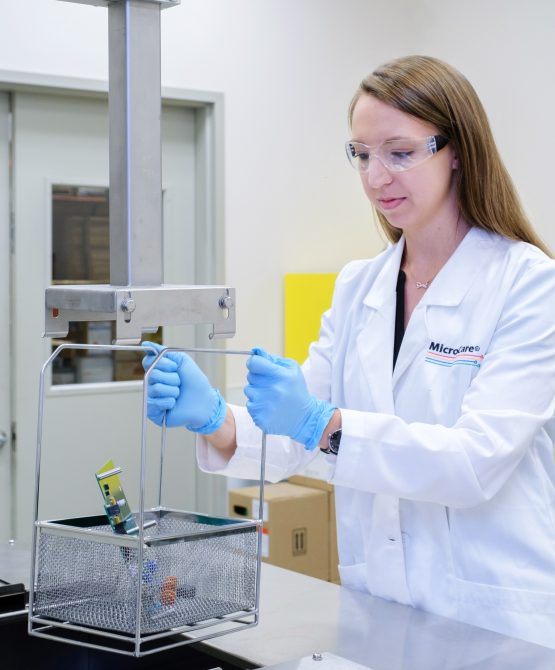
Keeping wellness wearables on track
By Emily Peck, senior chemist, MicroCare
Electronics Production / Materials Medical Editor Pick materials medical productionPrecision cleaning proves critical when making these multifaceted assemblies
Wearables are revolutionizing healthcare as they play an increasingly important role in managing health. Wearable technology like fitness trackers designed to collect data on personal health and exercise are growing in popularity. This technology typically monitors heart rate, temperature and blood oxygen levels, giving the user an overall health check and ultimately more control over their own wellness.
The pandemic is also boosting their use. Many people are taking a more active role in maintaining their health in the wake of Coronavirus and the adoption of wearable technology for general wellness purposes is steeply rising.
Fitness Tracker: The global fitness tracker market size is projected to reach a staggering $114.36 billion in 2028. Source: MicroCare
The global fitness tracker market size was USD $36.34-billion in 2020. Due to the impact of Covid-19, the market is projected to reach a staggering $114.36-billion in 2028 at a CAGR of 15.4% in the forecast period 2021-2028, according to a report by Fortune Business Assets.
It is not just digital health and fitness tracking tools that are increasing in use. Other wearable medical devices like remote patient monitoring (RPM) devices to diagnose and monitor short-term illnesses or long-term, chronic medical conditions are also increasingly prevalent.
Remote patient monitoring
As RPM capabilities advance, wearables which were once mainly used for consumer use are now being widely adopted by healthcare professionals. Wearable monitoring devices allow patients to incorporate convenient health observation and data collection without disruption to their daily lives. This assists in moving medical management outside of the healthcare setting and reducing the burden on healthcare providers, an important benefit since some are still experiencing the strain from the pandemic.

PCBA: Cleaning is crucial to ensuring the reliability of a PCBA. Source: MicroCare
The demand for devices like RPM and wearables means there is an increasing requirement to produce highly complex miniaturized electronics. Critically, the electronic components must deliver reliable and consistent performance, particularly as they are often used in medical devices that are life-sustaining. The problem, however, is that the smaller and more densely packed the electronic printed circuit board assembly (pcba), the more difficult it is to manage faults, quality and long-term reliability. Adding to the fact that they are typically used in products that must endure a long, hard life under harsh circumstances. An example is prolonged exposure to moisture and constant vibration, which makes reliability even more challenging.
Therefore, it is critical that procedures are implemented during the manufacture of these multifaceted assemblies to guarantee their consistency, reliability and longevity.
High quality cleaning
High quality cleaning is one critical process to achieve pcba consistency and ensure functionality. Contamination can affect pcba reliability and is often the number one root cause of the malfunction. Even the smallest amount of dirt or another contaminant can interfere with pcb performance.

Vapor Degreaser Overview: Vapor degreasers provide a simple, repeatable process that is effective at removing all contaminants. Source: MicroCare
Modern pcbas are small and densely packed with bottom termination components such as BGAs, CSPs, MLFs, QFNs, and D-Paks. This makes removing the contamination even more problematic. Debris and dust, and oil and grease from the production process as well as solder paste and flux residue, can easily remain on the assembly if they are not cleaned effectively. This can lead to a whole host of problems including parasitic leakage, electrochemical migration, delamination, dendrite growth and shorting. So, cleaning is crucial to ensuring the reliability of a pcba.
The cleaning process should be performed correctly and effectively to guarantee the reliability and longevity of the electronic assembly. It must be suitable for both the contamination encountered and the board substrate, but it must also meet exacting regulations and validation controls typically required of wearable medical devices.
Vapor degreasing
The vapor degreasing process is a good option when it comes to critically cleaning pcba. Vapor degreasers provide a simple, repeatable process that is effective at removing all contaminants. These closed-loop systems boil a nonflammable cleaning fluid into a dense vapor that rises through and is trapped inside the machine. The boiling fluid and vapors combine to clean and dry the contaminated pcbs inside. When the vapors reach condensing coils at the top of the machine, the coils chill the vapors back into a liquid state. This liquid falls into a trough and is made ready for another use.

Emily with Vapor Degreaser: Vapor degreasing with fluids offers flexibility in cleaning electronics of virtually any geometry or size. Source: MicroCare
Finding the right cleaning fluid
The advanced, environmentally progressive cleaning fluids used within a vapor degreasing system have many properties that are beneficial to the critical cleaning required within the manufacture of medical PCBAs. They are inherently hostile to bioburden and can make a substantial enhancement to the performance, reliability and longevity of the pcba.
Vapor degreasing fluid usually has a low surface tension and very low viscosity. This allows the fluid to penetrate and clean under tightly spaced areas which are now a common feature in medical electronics. The fluid dries quickly and completely without leaving residue behind. Most vapor degreasing fluids are also very heavy and dense which further serves to displace production particulate from around and under components.
The cleaning fluid properties offer flexibility in cleaning electronics of virtually any geometry or size and yet even delicate parts are easily cleaned and dried without damage. Non-aqueous cleaning fluids used inside vapor degreasers also help eliminate bioburden risk. Solvent-based vapor degreaser cleaning leaves no moisture in hard-to-reach areas that can promote unwanted bacteria growth. This results in simplified product and process validations.
Wearables are the future
Thanks to its ease of use and flexibility, wearable medical technology is transforming healthcare. However, for this market to grow it relies on electronic manufacturers’ understanding how to produce them so they can guarantee long-term performance.
The success of wearable technology hinges on its reliability. This means cleaning is key to their future, particularly as the technology advances and the pcbas used within wearable medical devices become even more multifaceted and complex.
Cleaning is a hurdle that can affect device success, but it is an important obstacle to overcome. If validated critical cleaning processes are not in place, pcba consistency can be compromised with device failure sometimes the inevitable result.
Vapor degreasing using modern cleaning fluids is one solution to help ensure wearable medical device reliability. By effectively cleaning electronics components, medical device manufacturers can more easily meet the growing medical wearable demand.
—————————————–
Emily Peck is a senior chemist at MicroCare, LLC, providers of benchtop and vapor degreasing electronics cleaning solutions. Peck holds a MS in Chemistry from Tufts University. www.microcare.com.
